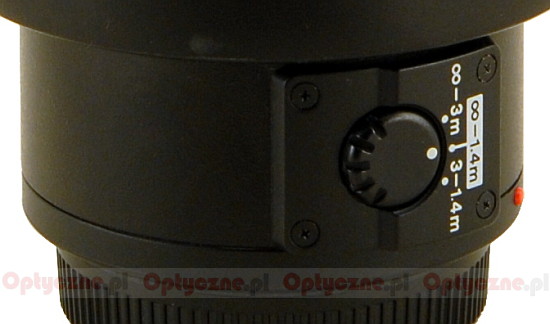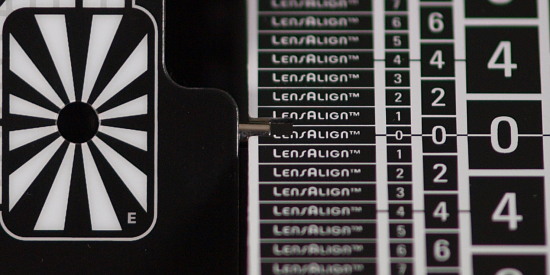Olympus Zuiko Digital 35-100 mm f/2.0
10. Autofocus
When it comes to the noise level during the work we can clearly hear we don’t deal here with an SWD. While focusing you can notice a typical whirr of the mechanism but fortunately it is neither loud nor very annoying when it comes to its frequency.
The autofocus of the tested lens is not perfect. Perhaps this sentence doesn’t sound very critical but in this case it should have exactly a critical overtone. If you don’t install an autofocus of the highest quality in an expensive, fast, journalistic zoom lens then where would you like to install it? The motor in the ZD 35-100 mm compares unfavorably with its competitors. Running through the full scale, no matter from what end, takes a bit over one second but it concerns the full range from 1.4 meters to infinity (which is not impressive compared to the rivals anyway). There is a focus limiter on the barrel which allows us to work also in the limited ranges from 1.4 to 3 meters and from 3 meters to infinity.
Please Support UsIf you enjoy our reviews and articles, and you want us to continue our work please, support our website by donating through PayPal. The funds are going to be used for paying our editorial team, renting servers, and equipping our testing studio; only that way we will be able to continue providing you interesting content for free. |
- - - - - - - - - - - - - - - - - - - - - - - - - - - - - - - - - - - - - - - - - - - - - - - -
 |
When it comes to the latter range the work is quick indeed but still falling behind the best performances possible because running through the scale still takes almost one second.
Our criticism doesn’t end here. In worse lighting conditions the autofocus of the E-3 plus 35-100 mm set belongs to the “searchers” category. It means it can run through the scale back and forth several times before it finds the right position. When the lighting is good we don’t notice such a phenomenon but something else occurs. Once every several / a dozen or so photos we witness a situation when the mechanism simply can’t decide about the right setting and for a moment jumps delicately between two close positions. It might be annoying, especially if it happens in a situation when you need an instantaneous shooting.
We can find comfort in very good accuracy of the mechanism. In the studio conditions the number of misses reached just 3.5% which is a very good result. In weak lighting the mechanism is perhaps far from being flash-quick and still prone to back-and-forth fine-tuning of the autofocus but if it finds the position it is the right one. Such a feature is important – when we have already shot the picture we can be virtually certain that the autofocus didn’t miss and the view will be sharp.
Fortunately, in the case of the vast majority of the Olympus lenses tested by us so far, we haven’t noticed any problems with front or back focus.
 |






